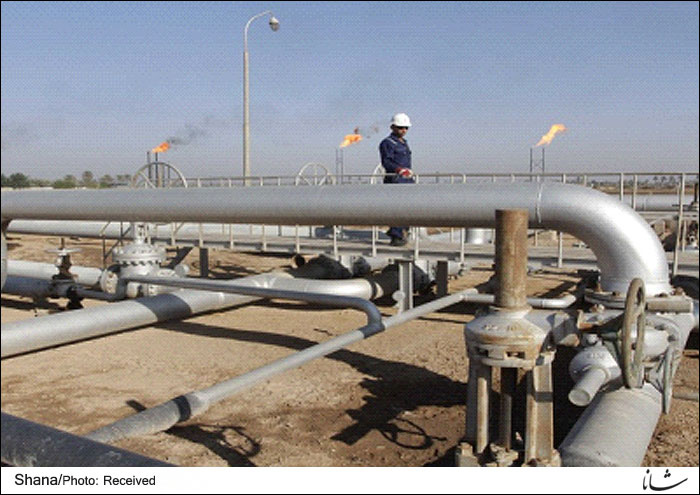Addressing the inauguration of one of these petrochemical plants recently, Iran’s petroleum minister Bijan Zangeneh said Iran’s third petrochemical hub will be established after Assaluyeh and Mahshahr.
Over recent years, petrochemical industry has captivated Iranian officials due to its appropriate productivity and revenue generation. WEP is the most important investment project by Iran’s petroleum ministry for the development of Kurdish-populated areas. In case the downstream sector of these plants is also launched the final products could be exported to Turkey and Iraq because there are no petrochemical facilities in eastern Turkey and northern Iraq.
It must be noted that a balanced development of petrochemical industries requires downstream industries everywhere across the country. Iran is currently building the longest ethylene pipeline in the world in its western provinces with the objective of developing its petrochemical industry and generate more value-added from ethane. According to Iranian petroleum industry officials, the total production from petrochemical projects under way in western Iran, mainly for Kurdish-populated areas, will be worth $8 billion by 2017. Petrochemical plants in western Iran are expected to produce two million tons this year. These plants are the third largest producers in the country.
Investments made in petrochemical plants located throughout the path of WEP total $3.5 billion. Furthermore, $1.2 billion investment is under way.
The bulk of ethane produced at the refineries of South Pars phases is expected to be delivered to Kavian Petrochemical Plant by next March. Kavian Petrochemical Plant is currently operating at 70% of its rated capacity. After ethane is converted into ethylene to be injected into WEP, a major development will transpire Iran’s petrochemical industry.
Given the existence of upstream plants along the path of WEP, downstream petrochemical industries are expected to produce a variety of petrochemicals and keep this industry away from selling raw materials. After completion, WEP will have the capacity of transferring 3.5 million tons of ethylene. It will receive 2.5 million tons of ethylene from South pars and one million tons from Gachsaran. WEP will feed 11 petrochemical plants.
The operations for the construction of Hamedan, Dehdasht, Mamesani, Boroujen and Kazeroun sections of the pipeline have yet to start. Like Ilam Petrochemical Plant, Tabriz Petrochemical Plant has moved to build its own connection to WEP.
Iran’s petrochemical industry, which has been growing rapidly in recent years, will enter a new phase next year as petrochemical plants in western provinces become operational.
Undoubtedly, Iran’s western province could soon become an industrial hub as petrochemical industry is being developed there. Then petrochemical products will at times meet domestic needs and be exported. NPC projects' manager recently said that construction of three more petrochemical plants is under way rapidly in western Iran.
WEP is currently in its final stages and enjoys full backing of NPC.
He said that WEP is fully operational between Assaluyeh and Miandoab, adding: “At present, Morvarid, Ilam, Lorestan, Kurdetan and Kermashah are being fed by this pipeline.”
Shahdaei recently said WEP is 80% completed, adding: “Currently, the second phase of Kavian Petrochemical Plant is ready to come online and is waiting to be fed with ethylene by this pipeline.”
The only body competent to decide about WEP to remain in state hands or be privatized is the government because maintenance, control and protection of the pipeline and accountability to consumers of ethylene is a significant and sensitive issue.
After Article 44 of the Constitution took effect, petrochemical units lying on the way of WEP were totally privatized. However, no decision was taken about the pipeline itself in the Cabinet. This issue is now a complicated affair for petrochemical industry because maintenance of this pipeline and the ethylene it carries is very sensitive and costly.
Production of some alcoholic substances, agricultural consumption, production of chemicals and other special substances are among other advantages of ethylene transfer by this pipeline. These advantages along with other usages of ethylene for various polymer productions have given a boost to ethylene production and transport by capsule in the market, which shows the high value of this product.
It is common knowledge that besides crude oil, what keeps Iran safe from fluctuations in the global economy is sustainable development which implies generation of value-added.
Getting more profits through creating a perennial market for petrochemical products, supplying products in consistency with the market’s taste and for getting more profits, helping national macroplans and sustainable job creation in the country, presenting an alternative model for downstream petrochemical development instead of upstream petrochemical development across the country, clearing the way for further contribution of the private sector to the country’s development plans and helping implement Article 44 of the Constitution, the necessity of taking into consideration complementary industries indirectly at the NPC mix and reducing possible risks and shortcomings resulted from international sanctions are among the advantages of development of downstream petrochemical industries alongside important projects like WEP in western Iran.
Courtesy of Iran Petroluem


Your Comment